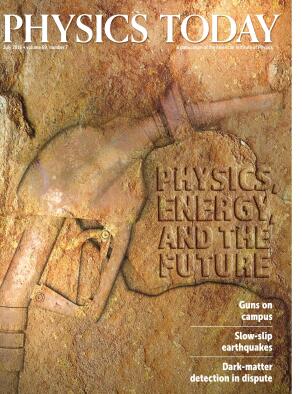How the bacterium Pseudomonas syringae induces water to crystallize
DOI: 10.1063/PT.3.3225
Ice-nucleating bacteria can catalyze ice formation in supercooled water stored in plant tissue. That ability enables them to rupture plant cell walls and release the nutrients the plants contain. Bacterial catalysis also provokes water in clouds to freeze; ice-nucleating bacteria may thus have a significant impact on weather and climate. Invoking molecular simulations, scientists conjectured that the surface of a bacterial protein organizes the liquid near it to promote crystallization. That hypothesis has now received experimental confirmation in work led by Tobias Weidner at the Max Planck Institute for Polymer Research. Weidner and colleagues studied the bacterium Pseudomonas syringae, whose ice-nucleating protein is called inaZ. They used sum-frequency generation (SFG) spectroscopy, in which IR and visible laser pulses aimed at an interface return a strong signal only if the interface is populated with ordered molecules. The observed signal increased as the researchers reduced the temperature, a manifestation of inaZ’s ever more effective water ordering at its surface. Complementary molecular simulations revealed an unanticipated subtlety. The surface of inaZ, shown in the figure with water molecules above it, alternates the hydrophilic regions (red) responsible for the enhanced SFG response with hydrophobic regions (gray). Close to the hydrophobic regions, the water resembles a liquid–vapor interface, but experimental and theoretical studies suggest that such an interface can boost nearby ice nucleation. The hydrophobic regions of inaZ may thus actually facilitate ice formation. Further SFG studies revealed another of inaZ’s tricks—it arranges the water molecules so that vibrational energy transfer effectively whisks away the latent heat released when water crystallizes. (R. Pandey et al., Sci. Adv. 2, e1501630, 2016, doi:10.1126/sciadv.1501630





